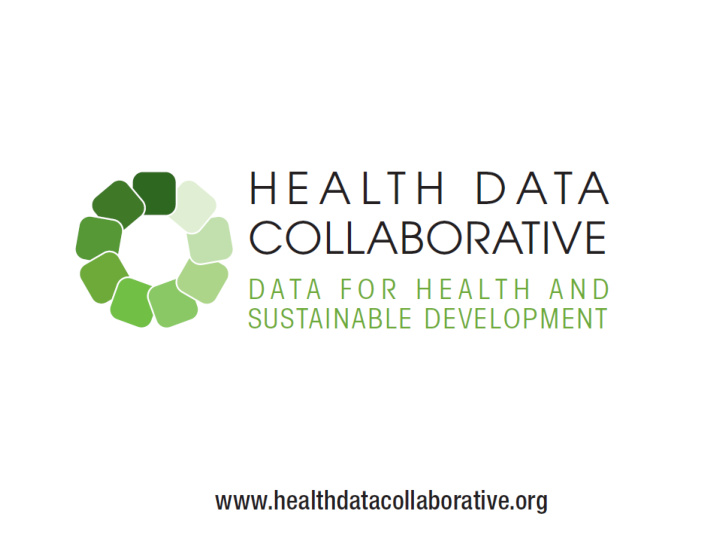



Health Data & the MDG Less successful Positive • Lack of progress in non-survey • health data sources (CRVS, admin More attention for and sources) investment in health data and monitoring progress • Slow progress in developing country analytical and data use capacity • More high-quality • Expanded and complex global household health surveys health architecture: – Increased fragmentation of health data investments by development • More work on (global) partners – Reporting burden on countries health estimates
Health Data & the SDG Positive Challenges • Need to address persistent data gaps • SDG Health and health-related targets – Regular (health) surveys comprehensive and for all countries – – CRVS strengthening Universal health coverage central – Health facility data sources • Global indicator framework • Need for strengthening of country health – 26 indicators under health goal 3 statistical capacity in developing countries – Comprehensive set, generally good compromise – National Statistical Offices – Fits within WHO Global Reference List of 100 – Core Health Indicator s Ministry of Health – – Few challenges: UHC financial protection Public health and research institutions / academic indicator (3.8.2) – Dozens of health-related targets under other • Requires goals – Country investment in health data • Country SDG health indicator framework – Harmonized and aligned support for – Many countries already have good set of strengthening developing country analytical indicators and targets for regular health sector capacity reviews, and use them – Greater collaboration between health and – Can be adapted to align with SDG as relevant statistical constituencies – Increasing emphasis on local data generation and use
Measurement for Health Summit June 2015 Consensus Deliverables A way forward • Agree on priority actions • Common Roadmap and 5-Point Call to • Greater partner Action : collaboration and joint required to build robust systems for monitoring SDGs action and national priorities • Increase level and efficiency of investments • Strengthen country statistical capacity • Align and meet country • Address challenges facing • Ensure well functioning population health health priorities countries (fragmentation, data disjointed efforts etc.) • Improve open facility and community systems and disease surveillance and admin data • Enhance use and accountability
The Health Data Collaborative: Theory of Change Challenges Major health data gaps Primary strategies hampering country health Outcome Output progress and monitoring of the SDG Strengthened 1 Increased country systems efficiency of Alignment of funding Disparate funding and for monitoring domestic and and technical support fragmented sources of programmes & external data for a single strong accountability investments in country M&E comparable, framework and timely and Context /Assumptions accurate health 2 Better reporting Growing interest in data data Package of standards, for decision-making and national and tools and repository accountability global progress of information on SDG available to all Global agencies truly countries committed to supporting national systems as priority Data revolution provides new opportunities
Country actions • Demand-driven based on country requests for collaboration that require multiple global / regional partner involvement • Aligned support for one country-led platform on health data : including plans, coordination mechanisms, indicators, tools, technology, reporting, accountability, learning agenda, capacity • Priorities will vary by country but some common issues such as strong national M&E plan as the basis for aligned support • Engagement of national statistical offices, country public health research and academic institutions
Global and regional level: Complementarity, alignment, gaps • Provide platform for global public goods, e.g. – 100 core health indicators – ongoing work on facility survey instruments, – global CRVS strengthening strategy • Leverage previous and existing global and region al technical collaborations and support mechanisms • Contribute and provide value add to existing strategies and global funding mechanisms : Global Strategy for Women’s, Children’s and Adolescent’s Health, global health security agenda, UHC Alliance; GFATM, GFF, GAVI etc. • Global monitoring of progress
Working through a global network of collaborative platforms, regional initiatives and working groups Leveraging existing WG: analytics & use WG: Country mechanisms where possible WG: action & Interoperability regional networks Working Groups are platforms WG: Facility & community for: Regional data (including network DHIS) HDC • (CHESTRAD) harmonization of tools, core team guidance, indicators etc. • PHCPI catalyse collective action Measurement & performance Regional countries & document best platform (e.g. AEHIN) practices and learning CRVS coordination mechanisms • Int Household operationalizing the data (IAWG, + Survey regional Network platforms) revolution DHS-MICS- LSMS • effective communication of Regional networks standards, suite of tools etc. Existing Regional HDC WGs collaborative networks platforms
Shared model of governance: collective responsibility Small Core team Steering Group (virtually/physically seconded) Anchor partners Technical working groups and regional platforms Health Data Collaborative partners
Recommend
More recommend